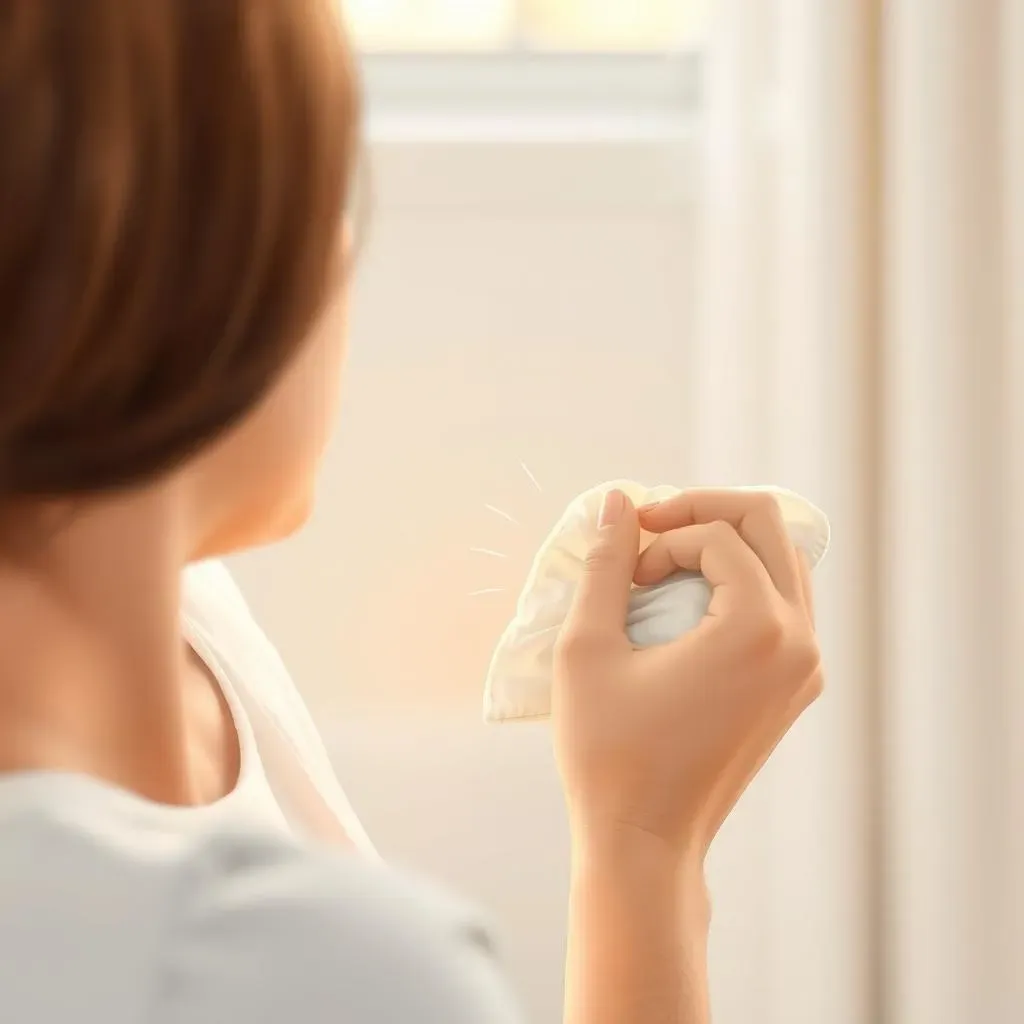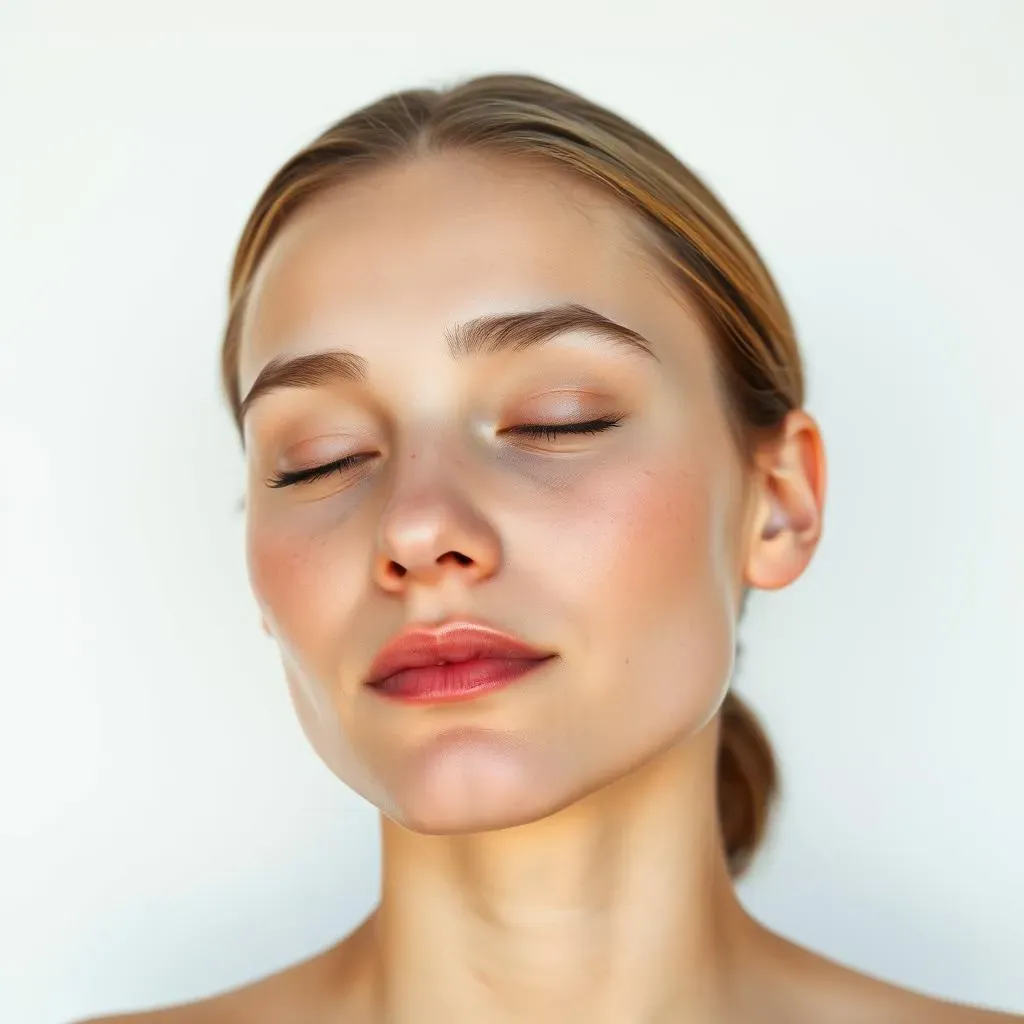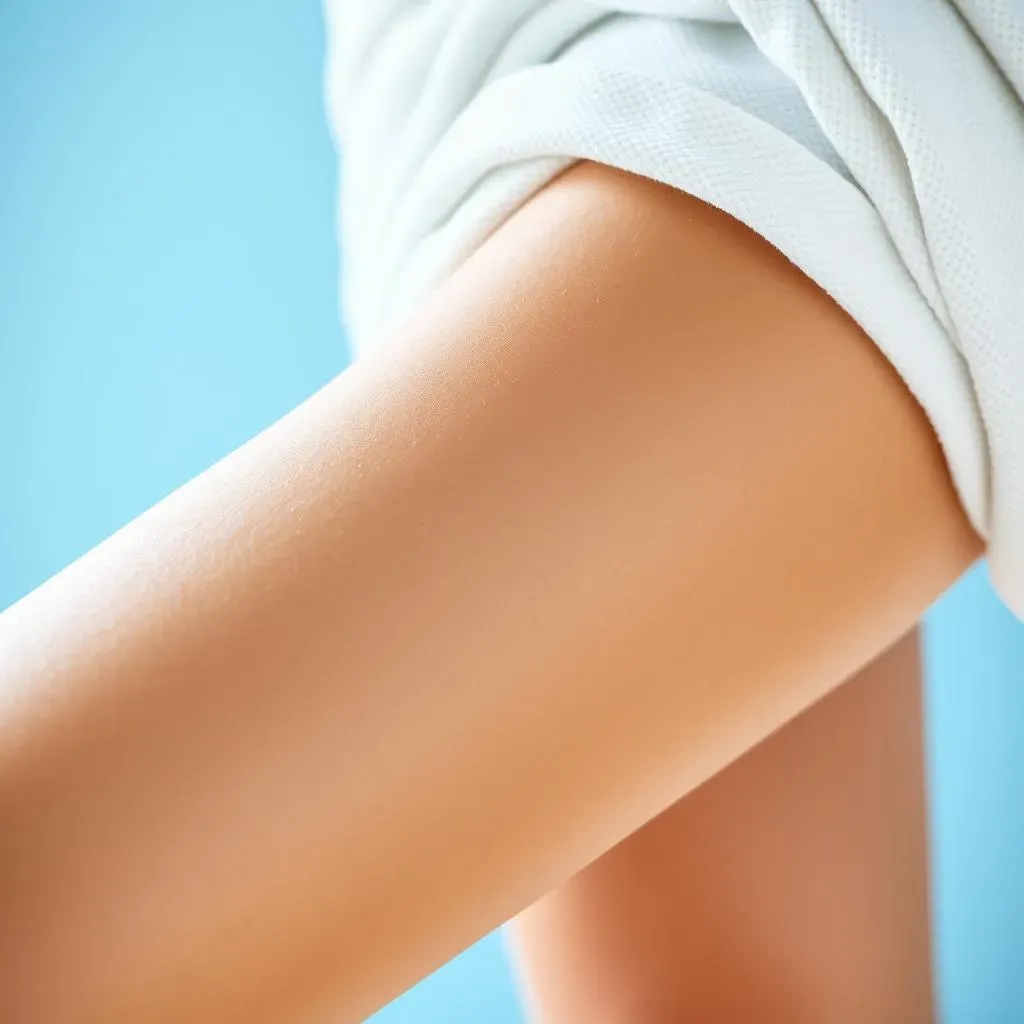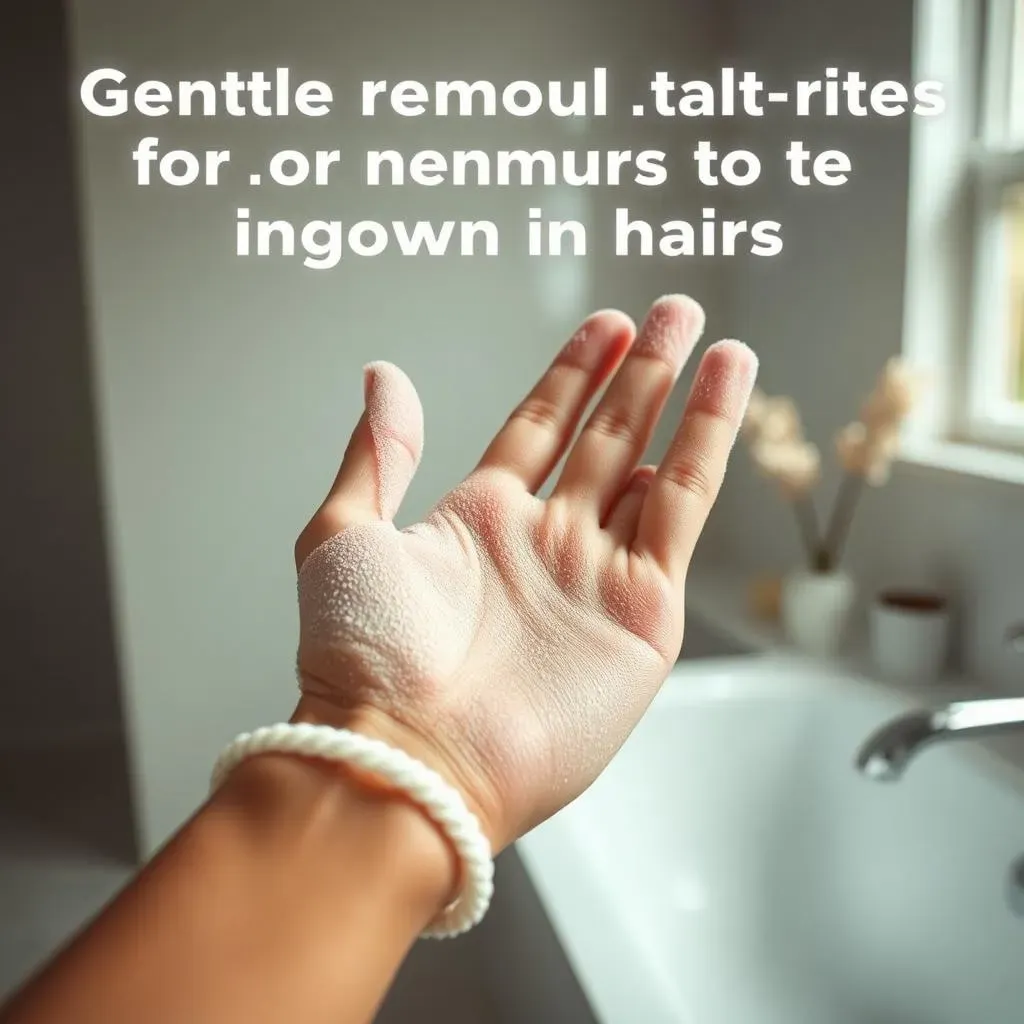Table of Contents
Ingrown hair can be a frustrating and painful problem, affecting anyone who removes hair from their body. If you're struggling with ingrown hairs and looking for ways to remove them, you're not alone. Ingrown hairs occur when hair grows back into the skin, leading to inflammation, redness, and discomfort. In this article, we'll explore the causes and symptoms of ingrown hair, as well as effective methods to remove ingrown hair and prevent future occurrences. From home remedies to professional treatments, we'll cover it all. Whether you're dealing with ingrown hairs on your face, legs, or pubic area, our goal is to provide you with the knowledge and tools to remove ingrown hair and achieve smooth, healthy-looking skin. So, let's dive in and discover the best ways to remove ingrown hair and say goodbye to this common problem.
Understanding Ingrown Hair: Causes, Symptoms, and Diagnosis

Understanding Ingrown Hair: Causes, Symptoms, and Diagnosis
What are Ingrown Hairs?
Ingrown hairs occur when a hair grows back into the skin instead of exiting through the skin's surface. This can happen after shaving, waxing, or tweezing, especially if the hair is curly or coarse. When hair grows back into the skin, it can cause inflammation, leading to redness, swelling, and pain. Ingrown hairs can appear as small bumps or pus-filled spots, and may be accompanied by itching, burning, or stinging sensations.
Ingrown hairs are more common in areas where the skin is thicker, such as the pubic area, armpits, and chin. They can also occur on the legs, especially after shaving. Anyone can get ingrown hairs, but they are more prevalent in people with curly or coarse hair, as these hair types are more prone to grow back into the skin.
Causes of Ingrown Hairs | Descriptions |
|---|---|
Improper shaving techniques | Shaving too closely, using a dull razor, or shaving against the grain can all contribute to ingrown hairs. |
Tight clothing | Tight clothing can cause friction, which can lead to ingrown hairs. |
Genetics | People with curly or coarse hair are more prone to ingrown hairs due to their hair's natural texture. |
Symptoms and Diagnosis
The symptoms of ingrown hairs can vary depending on the severity of the condition. Mild cases may cause small, red bumps, while more severe cases can lead to larger, pus-filled bumps. In some cases, ingrown hairs can become infected, leading to increased redness, swelling, and pain.
To diagnose ingrown hairs, a healthcare provider will typically perform a physical examination and ask questions about your skin care routine and hair removal methods. They may also prescribe topical creams or antibiotics if the ingrown hair becomes infected.
- Redness and swelling around the affected area
- Pain or tenderness to the touch
- Itching or burning sensations
- Pus-filled bumps or blisters
Risk Factors and Prevention
Certain factors can increase your risk of developing ingrown hairs. These include having curly or coarse hair, shaving or waxing regularly, and wearing tight clothing. To reduce your risk, it's essential to practice good skin care and hair removal techniques.
Some tips for preventing ingrown hairs include exfoliating the skin regularly, using gentle shaving creams, and shaving in the direction of hair growth. Avoiding tight clothing and keeping the skin moisturized can also help reduce friction and prevent ingrown hairs.
Prevention Tips | Descriptions |
|---|---|
Exfoliate regularly | Removing dead skin cells helps hairs grow out of the skin more easily. |
Use gentle shaving creams | Lubricating the skin reduces friction and prevents hairs from becoming trapped. |
Shave in the direction of hair growth | Shaving with the grain reduces the risk of hairs growing back into the skin. |
How to Remove Ingrown Hair: Treatment Options and Home Remedies

How to Remove Ingrown Hair: Treatment Options and Home Remedies
Home Remedies for Ingrown Hair Removal
Before seeking professional help, there are several home remedies that can aid in removing ingrown hairs. One of the most effective methods is applying a warm compress to the affected area. Soak a cloth in warm water, wring it out, and apply it to the ingrown hair for 10-15 minutes. This helps to open up the pores and bring the ingrown hair to the surface, making it easier to remove.
Another home remedy is using tweezers to gently pull out the ingrown hair. However, it's essential to sterilize the tweezers with alcohol before use to prevent infection. Only attempt to remove the hair when it's close to the surface of the skin, as digging too deep can cause further irritation and scarring.
Home Remedy | Description |
|---|---|
Warm Compress | Apply a warm, damp cloth to the affected area for 10-15 minutes to open pores and bring the ingrown hair to the surface. |
Exfoliation | Use a gentle exfoliating scrub or a chemical exfoliant containing alpha-hydroxy acids (AHAs) or beta-hydroxy acids (BHAs) to remove dead skin cells and help the ingrown hair exit the skin. |
Tweezing | Use sterilized tweezers to carefully pull out the ingrown hair when it's close to the surface of the skin. |
- Avoid scratching or picking at ingrown hairs, as this can lead to infection and scarring.
- Keep the affected area clean and moisturized to promote healing and prevent dryness.
- Consider using an over-the-counter hydrocortisone cream to reduce inflammation and itching.
Professional Treatments for Ingrown Hair Removal
If home remedies don't work, or if the ingrown hair is severe, it may be necessary to seek professional help. A dermatologist can prescribe topical creams or antibiotics to treat infected ingrown hairs. In some cases, they may use a minor surgical procedure to remove the ingrown hair.
Another professional treatment option is the use of depilatory products, which dissolve the protein structure of the hair, making it easier to remove. However, these products should be used with caution, as they can cause skin irritation in some individuals.
Professional Treatment | Description |
|---|---|
Depilatory Products | Dissolve the protein structure of the hair, making it easier to remove. |
Minor Surgery | A dermatologist may use a sterile needle to remove the ingrown hair. |
Topical Creams | Prescribed creams can help reduce inflammation and fight infection. |
It's essential to consult a healthcare professional if ingrown hairs persist, become infected, or don't respond to at-home treatments. They can provide personalized advice and treatment to help you remove ingrown hairs and prevent future occurrences.
Remove Ingrown Hair Permanently: Professional Treatments and Solutions

Remove Ingrown Hair Permanently: Professional Treatments and Solutions
Professional Treatments for Permanent Ingrown Hair Removal
For those who suffer from frequent or severe ingrown hairs, professional treatments can provide a more permanent solution. One such treatment is laser hair removal, which uses a laser to target and destroy the hair follicle, preventing future hair growth. This method is especially effective for individuals with thick or curly hair, as it can significantly reduce the occurrence of ingrown hairs.
Another option is electrolysis, a procedure that uses a fine needle to destroy the hair follicle with a small electrical charge. This method is more time-consuming than laser hair removal but can be just as effective in preventing ingrown hairs.
Treatment | Description | Effectiveness |
|---|---|---|
Laser Hair Removal | Uses a laser to target and destroy the hair follicle | Highly effective for permanent hair removal |
Electrolysis | Uses a fine needle to destroy the hair follicle with an electrical charge | Effective, but more time-consuming than laser hair removal |
It's essential to consult a qualified professional before undergoing any permanent hair removal treatment. They will help determine the best course of treatment based on your hair type, skin tone, and medical history.
Post-Treatment Care for Permanent Ingrown Hair Removal
After undergoing a permanent hair removal treatment, it's crucial to follow proper aftercare instructions to ensure the skin heals correctly and minimize the risk of complications. This includes avoiding direct sunlight, not picking at scabs, and keeping the treated area clean and moisturized.
- Avoid direct sunlight and use a broad-spectrum sunscreen with at least SPF 30
- Keep the treated area clean with mild soap and lukewarm water
- Apply a gentle moisturizer to soothe and hydrate the skin
- Avoid picking at scabs or scratching the treated area
By following these aftercare tips and maintaining good skin care habits, you can promote healthy skin and reduce the risk of ingrown hairs. Remember, while professional treatments can provide a permanent solution, it's still important to practice preventive measures to maintain healthy, ingrown-hair-free skin.
Preventing Ingrown Hair: Tips and Tricks for Healthy Skin

Preventing Ingrown Hair: Tips and Tricks for Healthy Skin
Preventing Ingrown Hair: Tips and Tricks for Healthy Skin
Preventing ingrown hairs is crucial for maintaining healthy, smooth skin. By adopting good skin care habits and proper hair removal techniques, you can significantly reduce the occurrence of ingrown hairs. Here are some tips to help you prevent ingrown hairs:
- Exfoliate your skin regularly to remove dead skin cells and help hairs grow out of the skin more easily.
- Use gentle shaving creams and lubricate your skin before shaving to reduce friction.
- Shave in the direction of hair growth, not against it.
- Avoid tight clothing, which can cause friction and lead to ingrown hairs.
- Keep your skin moisturized to prevent dryness and irritation.
Prevention Tip | Description |
|---|---|
Exfoliate regularly | Helps remove dead skin cells and promotes healthy hair growth. |
Use gentle shaving creams | Reduces friction and prevents hairs from becoming trapped in the skin. |
Shave with the grain | Decreases the risk of hairs growing back into the skin. |
Additionally, consider using alternative hair removal methods such as waxing, sugaring, or depilatory creams. These methods can be less irritating than shaving and may reduce the occurrence of ingrown hairs. However, it's essential to follow proper techniques and precautions when using these methods to avoid other skin irritations.
By incorporating these tips into your daily skin care routine, you can reduce the risk of ingrown hairs and maintain healthy, smooth skin. Remember, prevention is key, so be proactive and take the necessary steps to protect your skin from ingrown hairs.
Common Mistakes to Avoid When Trying to Remove Ingrown Hair

Common Mistakes to Avoid When Trying to Remove Ingrown Hair
Avoiding Common Mistakes When Removing Ingrown Hair
When trying to remove ingrown hairs, it's essential to avoid common mistakes that can exacerbate the problem. One of the most significant mistakes is scratching or picking at ingrown hairs. This can lead to infection, scarring, and prolonged healing time. Instead, try to resist the urge to scratch and focus on using gentle, non-irritating methods to coax the hair out.
Another mistake is using harsh exfoliating products or rough scrubbers, which can further irritate the skin and push the hair deeper. Instead, opt for gentle exfoliants containing alpha-hydroxy acids (AHAs) or beta-hydroxy acids (BHAs), which help break down dead skin cells without causing irritation.
Mistake to Avoid | Why It's Harmful | Alternative Solution |
|---|---|---|
Scratching or picking | Leads to infection, scarring, and prolonged healing | Use gentle exfoliants or warm compresses |
Using harsh exfoliants | Irritates the skin and pushes the hair deeper | Opt for gentle AHAs or BHAs exfoliants |
Shaving over the same spot multiple times | Causes friction and increases ingrown hair risk | Shave in the direction of hair growth and avoid repeat strokes |
- Avoid shaving over the same spot multiple times, as this can cause friction and increase the risk of ingrown hairs.
- Don't share razors or other personal grooming tools, as this can spread bacteria and lead to infection.
- Keep the affected area clean and moisturized to promote healing and prevent dryness.
Additional Tips for Safe Ingrown Hair Removal
When attempting to remove an ingrown hair, it's crucial to prioritize hygiene and safety. Always sterilize any tweezers or needles with alcohol before use to prevent infection. If you're unsure about how to remove the hair or if the ingrown hair is deeply embedded, consider consulting a dermatologist or healthcare professional.
After removing an ingrown hair, apply an antibacterial ointment to the affected area and cover it with a bandage to protect it from further irritation. Avoid tight clothing and continue to keep the area clean and moisturized to promote healing.
Safe Removal Tips | Benefits |
|---|---|
Sterilize tweezers or needles | Prevents infection and promotes safe removal |
Apply antibacterial ointment | Reduces the risk of infection and promotes healing |
Keep the area clean and moisturized | Supports the healing process and prevents dryness |
By being mindful of these common mistakes and taking the necessary precautions, you can safely and effectively remove ingrown hairs and maintain healthy, smooth skin.
Conclusion: Say Goodbye to Ingrown Hair for Good
Removing ingrown hair requires a combination of proper hair removal techniques, good skin care, and patience. By understanding the causes and symptoms of ingrown hair, and using the methods outlined in this article, you can effectively remove ingrown hair and prevent future occurrences. Remember to always prioritize your skin's health, and don't hesitate to seek professional help if your ingrown hairs become severe or infected. With the right approach, you can achieve the smooth, healthy skin you deserve. So, take control of your ingrown hair today and start your journey to ingrown-hair-free skin. For professional hair removal solutions, consider visiting hairawaybylaser.com to explore their services and take the first step towards a life without ingrown hairs.
